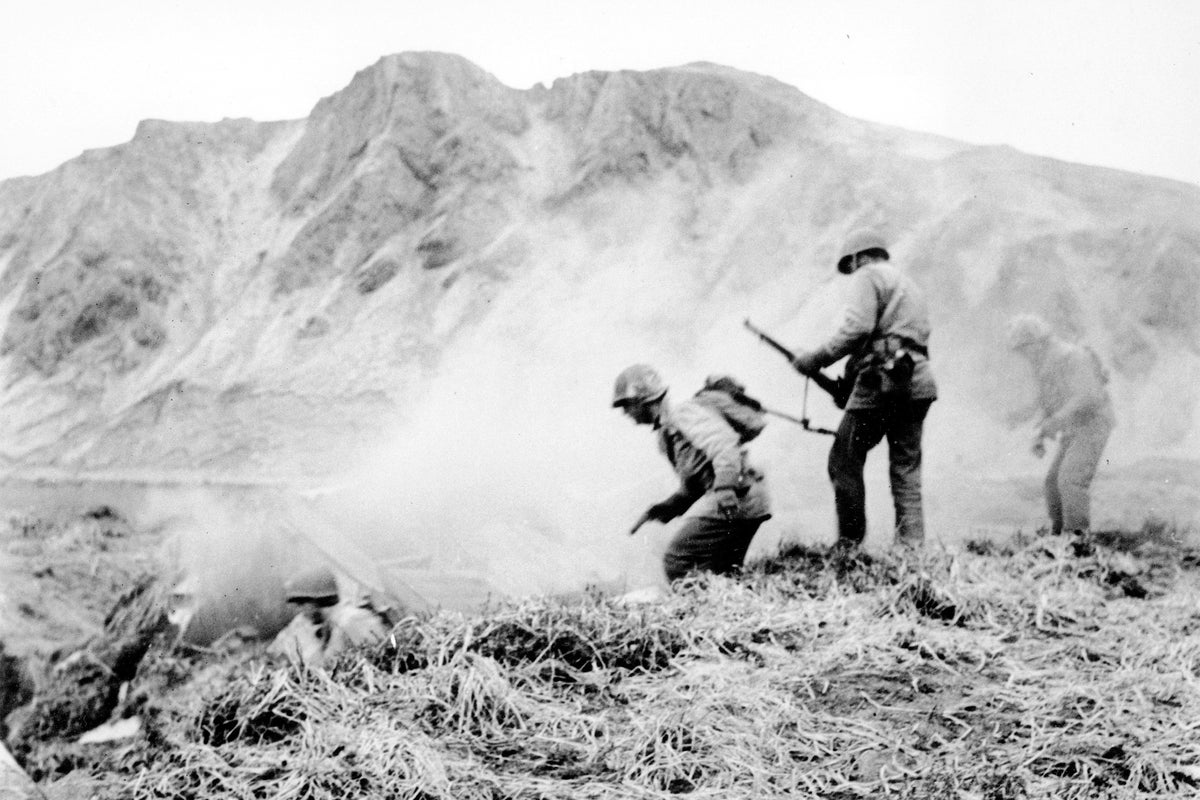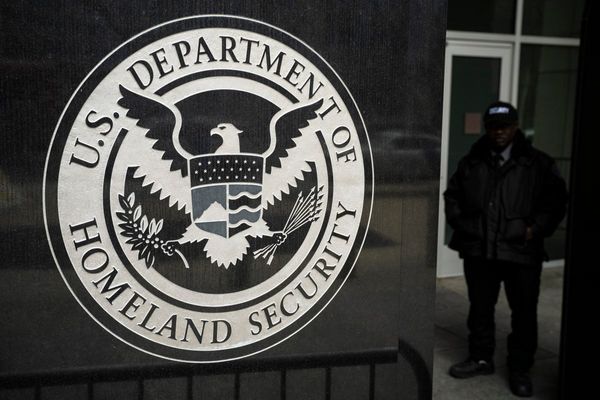
Helena Pagano's great-grandfather was the last Alaska Native chief of a remote island in the Bering Sea, closer to Russia than North America. He died starving as a prisoner of war after Japanese troops invaded during World War II, wresting the few dozen residents from their village, never to return.
Pagano has long believed Japan should pay more restitution for what its soldiers did to her great-grandfather and the other residents of Attu Island.
But her demand was sparked anew this summer by her first visit to the island. She went alongside Japanese officials who, as part of a redoubled effort to recover the remains of World War II soldiers killed abroad, unearthed the bones of two people from the tundra.
The Attuans "lost their homeland, they lost their family members,” Pagano said. “This story was never told, and the Japanese have never really helped us in that regard.”
Attu Island is the most westerly of Alaska’s Aleutian chain. It was one of the few U.S. territories, including Guam, the Philippines and the nearby island of Kiska, to be captured during the war.
Japanese landed on Attu on June 7, 1942, killing the radio operator. The residents were kept in their homes for three months, then taken to Japan.
U.S. forces waged a bloody campaign amid hurricane-force winds, rain and dense fog in 1943 to retake Attu Island in what became known as the war’s “forgotten battle.” More than 2,500 Japanese soldiers died in combat or by suicide, and American forces lost about 550 soldiers.
Of the 41 residents interned on Japan’s Hokkaido Island, 22 died from malnutrition, starvation, tuberculosis or other ailments over the next two-plus years, including Pagano’s great-grandfather, Mike Hodikoff, the last chief. Hodikoff and his son both died in 1945, suffering from food poisoning after being reduced to scrounging through rotting garbage for sustenance.
After the war, surviving Attuans were not allowed to return to the island because the U.S. military said it would be too expensive to rebuild. Most were sent to Atka Island, about 200 miles (322 kilometers) away. The last surviving Attu residents that were held in captivity died last year.
In 1951, six years after the end of the war, Japan did offer the Attuans who survived about $4,000 a year — more than the average U.S. annual salary at the time — for three years, Pagano said. Nearly all accepted, but her grandmother refused, suggesting the treatment the POWs endured was too awful to be compensated with money.
The Japanese never compensated the families for the deaths of prisoners or for the loss of land and damage to Attuan culture and language, said Pagano, who runs Atux Forever, a nonprofit devoted to Attuan culture. The historical trauma still weighs on the 300 or so Attuan descendants remaining in the U.S., she said.
Besides restitution, she'd like to see the Japanese government invest in a cultural center for Attuans somewhere in mainland Alaska and to work with the U.S. government on an environmental cleanup of Attu Island, including the removal of old anti-aircraft guns and steel planking that was used for temporary air strips, along with a peace memorial she said Japan erected there without the input of Attuans or U.S. veterans who served in the battle.
Officials at Japan’s Health, Labor and Welfare Ministry and the Foreign Ministry said they have not received requests for additional restitution from Attuans.
There have been compensation demands for brutality against POWs, wartime Korean forced laborers and “comfort women” from across Asia who were forced into prostitution for Japanese soldiers. But the Japanese government has insisted that all compensation issues were settled under a 1951 treaty in San Francisco, whose signatory members had waived their rights, or other treaties, said Yoshitaka Sato, an official at the Health, Labor and Welfare Ministry. Japan had set up funds for the women in 1995 and 2015 as exceptions.
Pagano says the 1951 treaty would not bar additional restitution.
The island is part of the Alaska Maritime National Wildlife Refuge. In August, Pagano made her first trip to Attu, on a ship operated by the U.S. Fish and Wildlife Service, which manages the refuge.
She said she didn't know ahead of time that the Japanese officials would be exhuming any remains, and she considered it disrespectful, saying the bones could have been those of Attu residents or U.S. soldiers.
Jeff Williams, deputy manager of the refuge, said the exhumation plans weren't approved until just before the trip.
The former Attu village site, where the bones were unearthed, is owned by the Aleut Corp. — one of several regional, for-profit corporations set up to benefit Alaska Natives. In an email, spokesperson Kate Gilling said the Aleut Corp. “recognizes the significant historical trauma endured by the Attuan people during and after World War II” and that it was aware of Atux Forever’s call for reparations.
"We believe greater partnership between all entities in the Aleutian and Pribilof Island region will help advance solutions that are comprehensive and inclusive,” she said.
As war veterans and their relatives age, the Japanese government has faced growing calls to speed the recovery of remains and has done so, including more use of DNA testing. Of about 2.4 million Japanese troops who died in the war outside Japan, the remains of a little more than half have been recovered.
Japan conducted its first reclamation of remains on Attu in 1953 and recovered those of about 320 Japanese soldiers, which were taken to Japan and stored at the Chidorigafuchi National Cemetery. The remains of the others on Attu are unaccounted for.
Sato, the Japanese government official, said the U.S. government controls what areas Japan can survey for remains and requires Japan to take necessary environmental protection measures.
Japanese efforts to recover remains on Attu had long been on hold, largely due to U.S. environmental concerns, Sato said. In 2009, the U.S government required environmental assessment that led to further delay of more than a decade.
Prior to the August visit to Attu, the U.S. proposed a survey without digging, but later allowed shoveling inside of a small piece of land, Sato said. Under the supervision of U.S. officials, the remains of two suspected Japanese soldiers were unearthed.
The remains were sent to Anchorage for temporary storage pending a preliminary evaluation by Japanese experts to be dispatched by the end of March. If their analysis determines the remains are very likely Japanese, samples will be sent to Japan for DNA testing, Sato said.
During the August visit, Pagano spent two days on the island, collecting water samples from a creek to check for lingering environmental contamination.
While others returned to the ship to sleep at night, she camped out — likely the first Attuan to spend a night on the island since the residents were forcibly removed 82 years ago.
“I did feel really calm and peaceful and complete as a human being,” Pagano said.
___
Yamaguchi reported from Tokyo.







